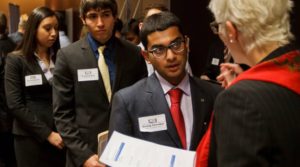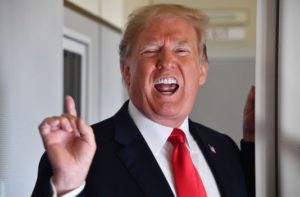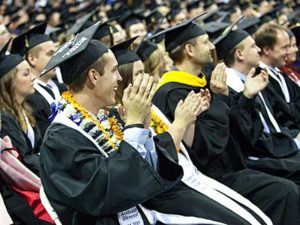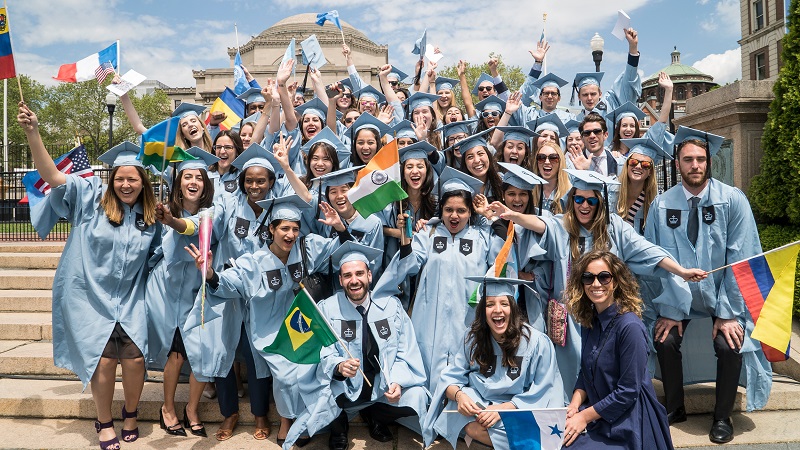Once a sought after location to pursue undergraduate and graduate degrees, international students have recently shown less interest in studying at U.S. institutions and are instead opting for other countries like Canada and the United Kingdom to receive their higher educations.
The Canadian Bureau for International Education (CBIE) reported a record enrollment of 494,525 international students in Canadian institutions in 2017, surpassing the 450,000 target set by its government for 2022. Similarly, the United Kingdom hosted 442,375 international students in 2017, a five percent increase from the previous year.
According to an Open Doors Report on International Educational Exchange, U.S. institutions saw 115,841 new international undergraduate enrollments during the 2016-2017 academic year, a decline of 3,421 students than the year before. The following year saw an even further slump with just total 108,539 enrollments, another decline of 7,302 students.
“Overall, responding institutions report a 1.5 percent decrease in the number of international students enrolling for the first time at a U.S. institution, which indicates a third consecutive year of falling new enrollment,” the report noted.

Along with dwindling student enrollment numbers, a decline in visas issued to international students has also been observed over the last few years. According to Quartz, the U.S. issued visas to less than 400,000 students in 2017, representing a 40 percent drop since 2015.
Various studies and reports have attributed different reasons to the declining enrollment rates, ranging from increased competition from other countries, to changing preferences of international students, to visa rules and the current political climate of the U.S.
Political Environment and Trump Policies
The 2018 Open Doors Report cited the political climate in the U.S. as one of the major factors contributing to the ongoing declining enrollment of international students. Out of 540 institutions surveyed for the report, 60 percent cited the present political and social climate as one of the major reasons for the slump.
Hans de Wit, the director of the Center for International Higher Education and consulting editor at the Policy Reviews in Higher Education, U.S., said he thinks the U.S. has become an increasingly unwelcoming, expensive and unsafe country for international students.
“It would be too simple to say that the only reason is the travel ban or even the related unwelcoming environment as a result of the Trump administration,” de Wit told The College Post.
“Although for sure they have seriously contributed, and will even more contribute if he continues with his wall pressure, trade war and other measures against China, together with India, the largest sending country to the U.S. India is also a challenge given measures such as limiting practical training options. Security and safety are issues (guns and schools are not very inviting!),” he added.
However, for Thomas L. Harnisch, the director of state relations and policy analysis at the American Association of State Colleges and Universities, President Donald Trump’s political rhetoric is a major contributing factor to the decline in enrollment trends.

“Some of the policy changes of the Trump Administration, combined with the nationalist rhetoric, can be a hindrance to institutional efforts to attract students from abroad,” Harnisch told The College Post.
“There are myriad factors contributing to international student enrollment trends, and the tone, rhetoric, and policies of the Trump Administration need to be included in the discussion.”
Back in August 2018, the federal government began strictly implementing its immigration laws for students and exchange visitors.
“USCIS is dedicated to our mission of ensuring the integrity of the immigration system,” USCIS Director L. Francis Cissna said while issuing the policy memorandum in June 2018. “F, J, and M nonimmigrants are admitted to the United States for a specific purpose, and when that purpose has ended, we expect them to depart, or to obtain another, lawful immigration status.”
Gaurav Khanna, an assistant professor at the University of California, San Diego’s School of Global Policy and Strategy sees these strict visa laws in the U.S. and a jump in the recruitment of international students by other countries as additional factors contributing to the enrollment declines.
“Trump policies may matter, but it is hard to be certain about how much they matter,” Khanna told The College Post. “One fear that students may have is that it may be more difficult to get a job easily in the U.S. after graduation, given possible changes to work visa laws.”
Impact on institutions and domestic students
According to research conducted by economist Kevin Shih, the revenue from international student tuition often contributes to the subsidization of domestic student’s college costs.
“At the graduate level, international students do not crowd-out, but actually increase domestic enrollment,” Shih notes in the study. “Such positive effects are attributable to cross-subsidization, whereby foreign student tuition revenue is used to subsidize the cost of enrolling additional domestic students.”

As a result of more and more international students choosing other countries for their higher educations, U.S. universities, the U.S. economy and American companies are experiencing a profound negative impact, according to an analysis of U.S. Department of Homeland Security data by the National Foundation for American Policy.
“A decline in enrollments will lead to increasingly serious financial shortfalls to support local students,” Andy J. Semotiuk, a U.S. and Canadian immigration lawyer told The College Post. “In time we may see colleges closing down because they are unable to cover costs.”
Khanna said he thinks the declining enrollment trend will greatly affect public research universities in particular, especially if they lose access to full-fee paying, high ability international students.
“Since the mid-2000s public research universities have become more reliant on revenues for foreign students,” Khanna said. “Indeed, places like the University of Illinois at Urbana-Champaign have now taken out insurance contracts against the possibility of losing access to Chinese students. If public universities lose foreign students they will either have to raise in-state tuition rates or cut expenditures – both of which hurt the quality of the universities.”
Last month, the University of Illinois at Urbana-Champaign spent $425,000 on insurance after a sudden drop in its enrollment of Chinese students. The school will be entitled to a $60 million cover if the enrollment of students in its colleges of business and engineering drops below 18.5 percent in comparison to previous years as a result of policy changes announced by the federal government.
De Wit fears that the negative financial implications of declining international student enrollment will become even higher in the coming years for a large number of U.S. universities.
“Unless the U.S. will be opening up and more welcome in its national policy and, at the same time, will reduce tuition for international students, the negative impact will grow and the divide between the small group of top research universities and the rest will increase,” De Wit said.
New York University a Top Institution for International Students



